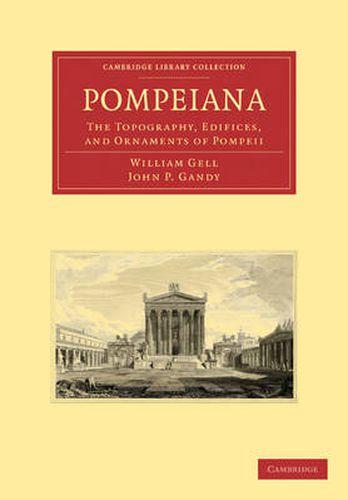Readings Newsletter
Become a Readings Member to make your shopping experience even easier.
Sign in or sign up for free!
You’re not far away from qualifying for FREE standard shipping within Australia
You’ve qualified for FREE standard shipping within Australia
The cart is loading…






Sir William Gell (1777-1836) was a British archaeologist known for his drawings of sites and objects of classical interest. Noting that from the beginning of the excavations at Pompeii in 1748 ‘to the present day, no [substantial] work has appeared in the English language upon the subject of its domestic antiquities’, together with architect and fellow countryman John P. Gandy he first published Pompeiana to help detail important findings that had been made by the excavators in the first two decades of the nineteenth century. To this end they provide historical discussion, analysis, and over 75 plates illustrating various points of archaeological interest including, as their subtitle notes, ‘the topography, edifices, and ornaments of Pompeii’. Pompeiana is an important work that helped open the excavations to English readers and created further awareness of the treasures of the doomed city, destroyed by an eruption of Mount Vesuvius in 79 CE.
$9.00 standard shipping within Australia
FREE standard shipping within Australia for orders over $100.00
Express & International shipping calculated at checkout
Sir William Gell (1777-1836) was a British archaeologist known for his drawings of sites and objects of classical interest. Noting that from the beginning of the excavations at Pompeii in 1748 ‘to the present day, no [substantial] work has appeared in the English language upon the subject of its domestic antiquities’, together with architect and fellow countryman John P. Gandy he first published Pompeiana to help detail important findings that had been made by the excavators in the first two decades of the nineteenth century. To this end they provide historical discussion, analysis, and over 75 plates illustrating various points of archaeological interest including, as their subtitle notes, ‘the topography, edifices, and ornaments of Pompeii’. Pompeiana is an important work that helped open the excavations to English readers and created further awareness of the treasures of the doomed city, destroyed by an eruption of Mount Vesuvius in 79 CE.